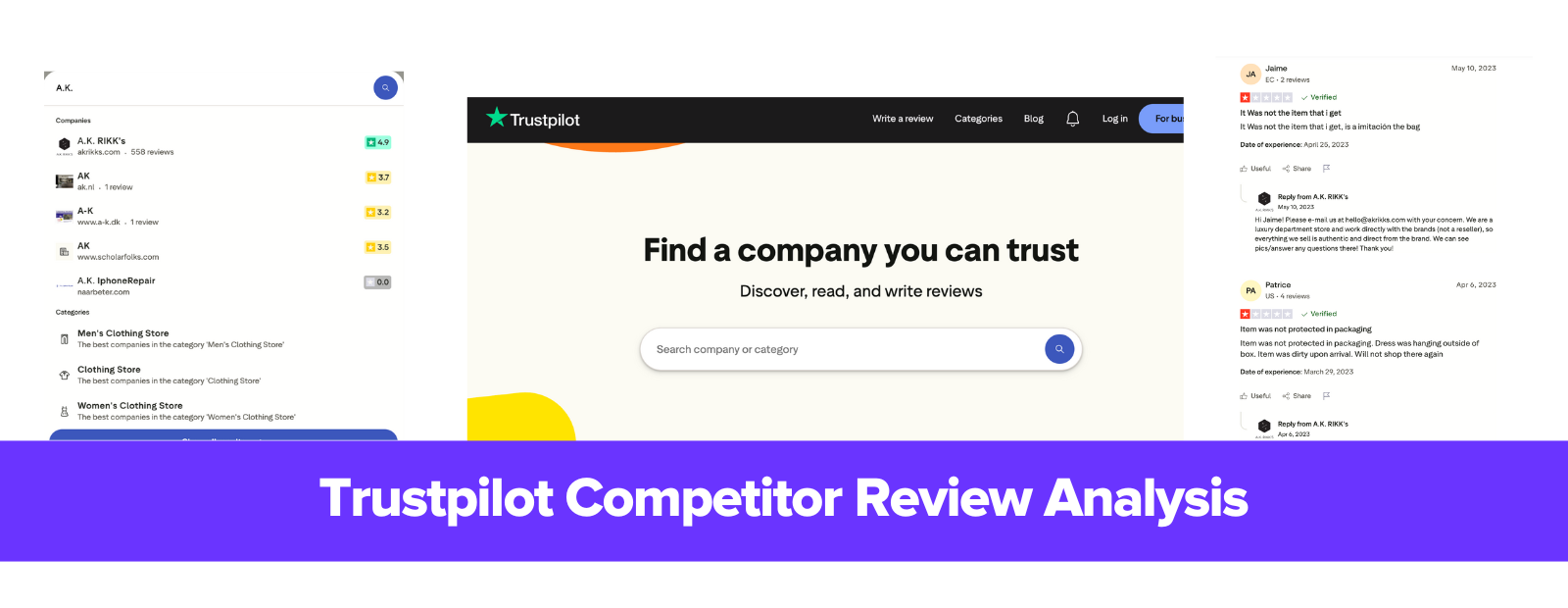Wondering where you can find verified reviews about your competitors? With over 300 million reviews and counting, Trustpilot is your best bet.
Keeping track of Trustpilot reviews has more benefits than you realize, especially for growing your business and improving your marketing.
In this article, we’ll talk about how to monitor your competitors’ Trustpilot reviews as part of your competitor analysis process and why this small habit can be a powerful tool for you.
What is Trustpilot?
Trustpilot is an independent review directory site where customers can leave reviews for any brand and where brands can invite their customers to leave a review.
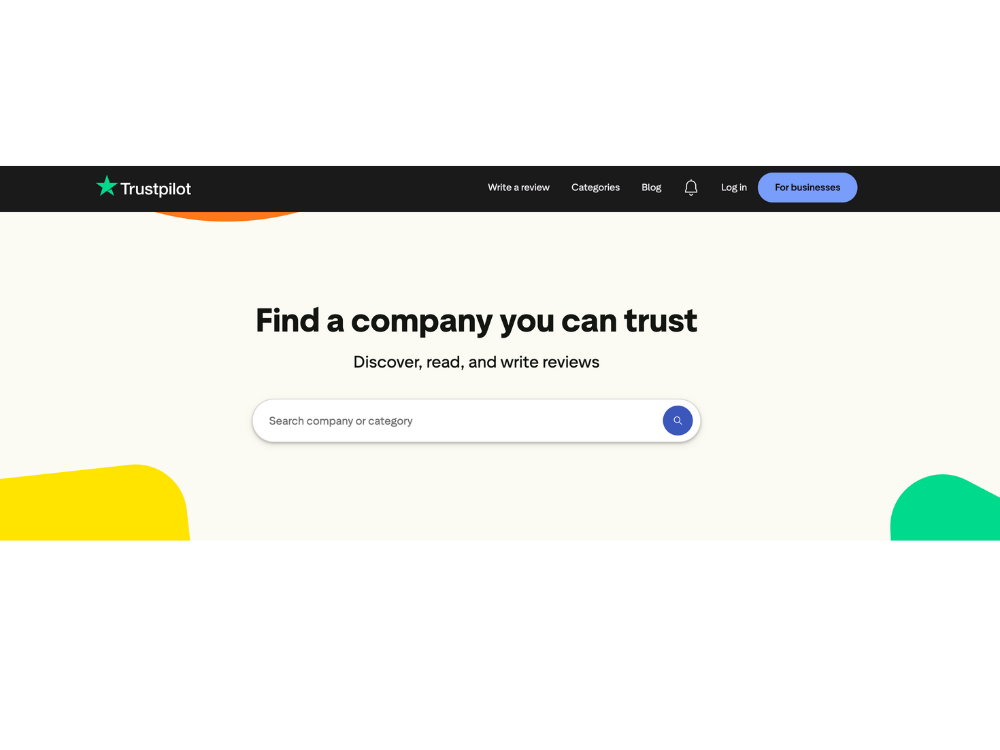
The website was launched in 2007 and has earned a name for itself as one of the biggest online review aggregators.
It makes sense that businesses use Trustpilot to gain consumer trust and establish social proof online. A stronger brand reputation is a few five-star reviews away with Trustpilot.
Case in point: seventy-one percent of US consumers surveyed said that a good Trustpilot rating makes them more likely to purchase from a business.
Your competitors are probably already on Trustpilot, given its popularity and effectiveness for boosting trust. That’s why it makes sense to track competitor reviews on the review site…
Why track Trustpilot reviews?
Reviews matter a lot as most consumers turn to reviews as a source of shopping information. Reviews can be the lever that drives them to finally buy–that’s how much of an impact reviews make.
And reviews on Trustpilot have even more value because the platform is independently run. A business has no control over what its customers post about them on the site, making Trustpilot ideal for shoppers who want authentic feedback and recommendations.
Contrast this to reviews buyers write on a brand’s website. These reviews can easily be tampered with or even faked. In a time when sponsored reviews are rampant, it make sense that consumers are wary of reviews on brand-owned channels.
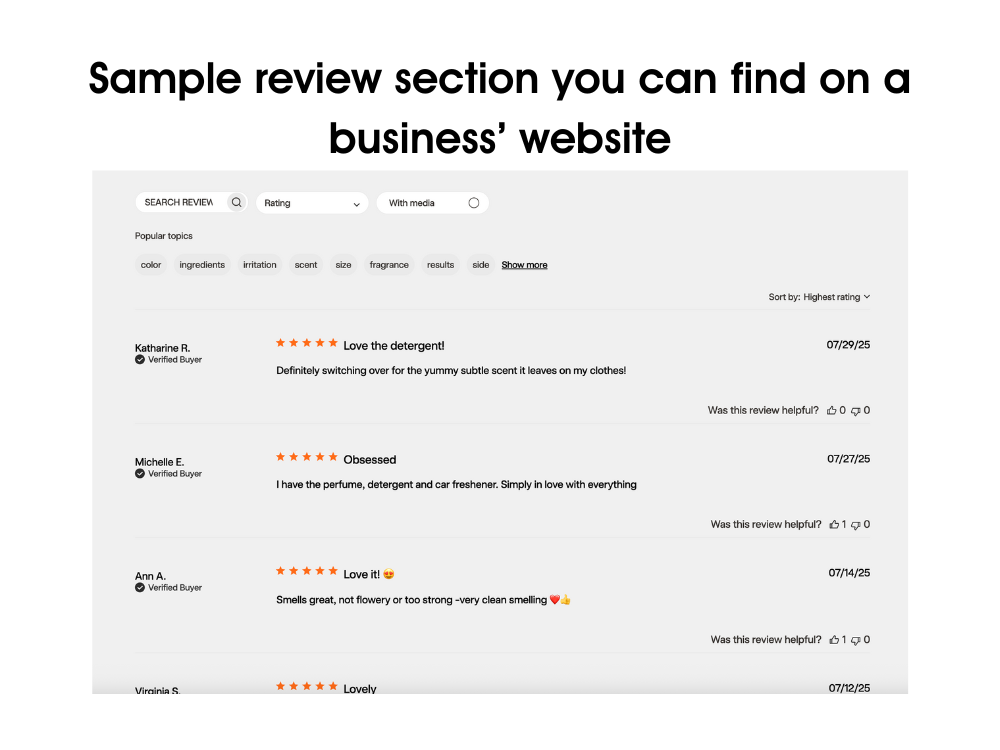
Furthermore, Trustpilot is recognized worldwide. Their star ratings are a huge form of social proof for many B2C brands, who to show off these ratings and reviews through widgets on their websites and landing pages.
These are just some of the reasons to monitor your reviews and your competitors’ reviews on Trustpilot.
But beyond those reasons, here are more ways competitor review tracking can help your business.
It uncovers your customers’ dissatisfactions
Reviews reveal what customer needs your competitors are not fulfilling.
If they get less than stellar reviews, it’s a good practice to dig in and note down where they’re lacking in or worse, failing at, when it comes to customer satisfaction.
Hear it straight from the consumers themselves to get an accurate and unfiltered take. You can use this information to get a leg up in the future.
It helps you spot your shortcomings before they become an issue
In the same vein, look out for what customers praise in your competitors–what they’re doing well that you are not doing as well or maybe not doing at all.
Do they offer free shipping and white glove delivery? Then, consider trying out these promotions in your marketing too.
You need to know what your competitors’ strengths are. In some ways, this can be more helpful than just knowing your competitors’ weaknesses.
Reviews matter a lot as most consumers turn to reviews as a source of shopping information. Reviews can be the lever that drives them to finally buy–that’s how much of an impact reviews make.
It helps you improve your product and offers
Looking for ways to make your product more appealing to your target audience? Do you need ideas for new products and product lines?
Sifting through competitor reviews from customers is an easy way to find good ideas that are proven to work.
On top of that, you can learn from critical reviews and find a way to one-up your competitors by creating a product that addresses customer complaints and desires.
How to monitor and analyze your competitor’s Trustpilot reviews
Go to Trustpilot.com and look for your competitor using the search bar.
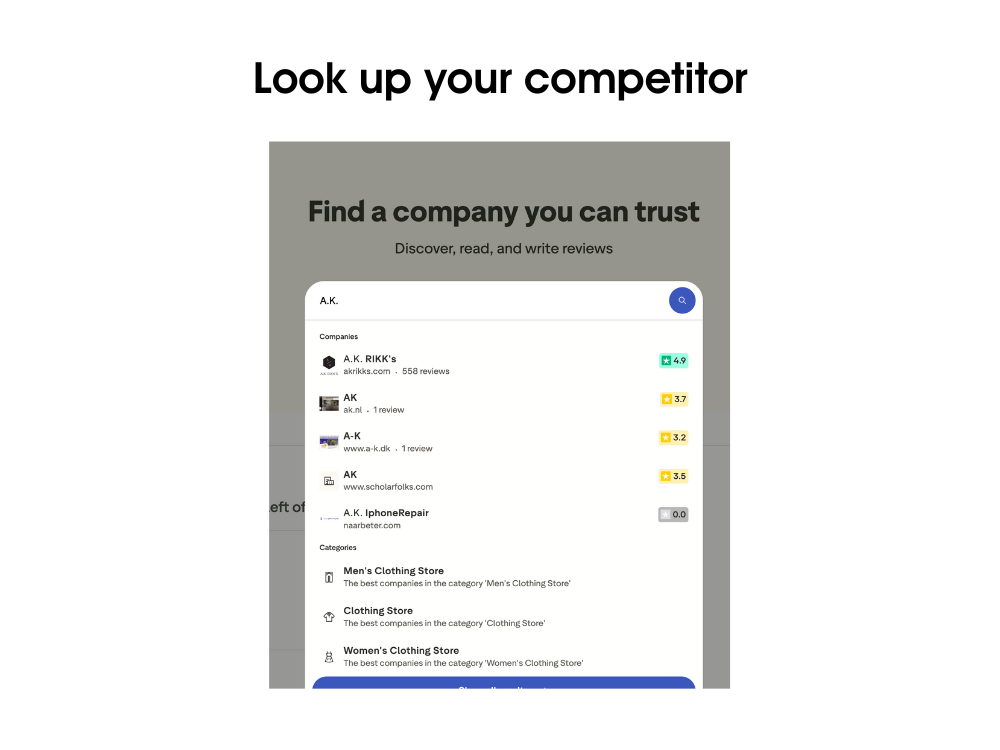
Go to your competitor’s Trustpilot page by clicking on their name on the search results.
On this page, you can see the following information:
- Their star rating on Trustpilot (their “TrustScore”)
- The number of reviews they have on Trustpilot
- A link to their website
- A summary of the reviews they’ve received
- Featured customer reviews
- Company details and contact information
- All the reviews they have on Trustpilot
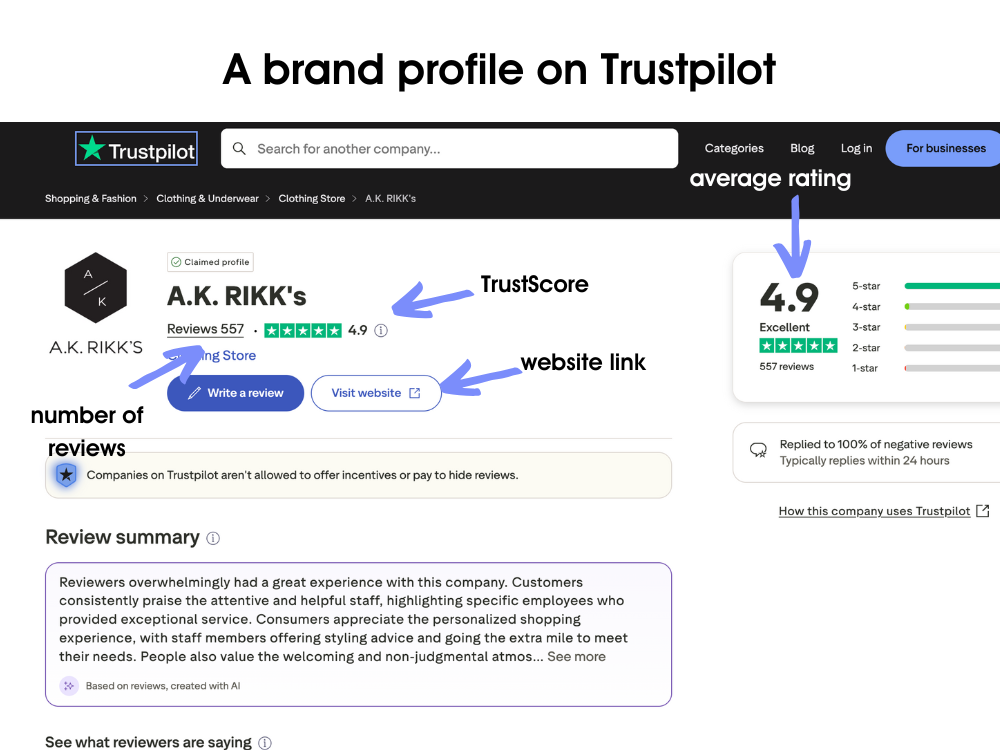
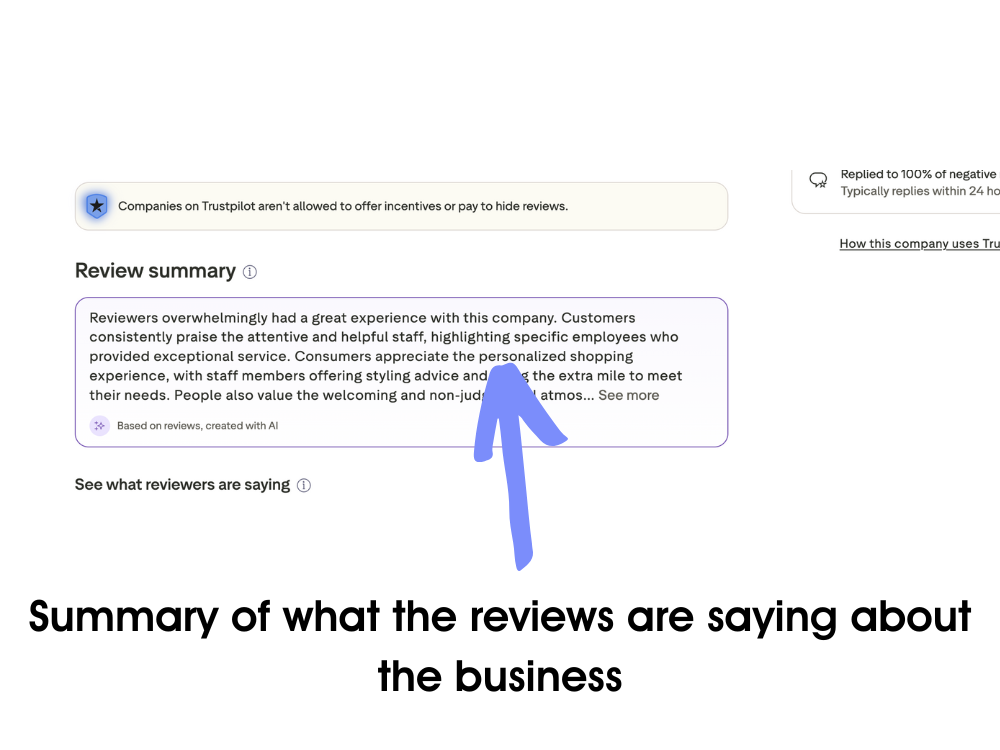
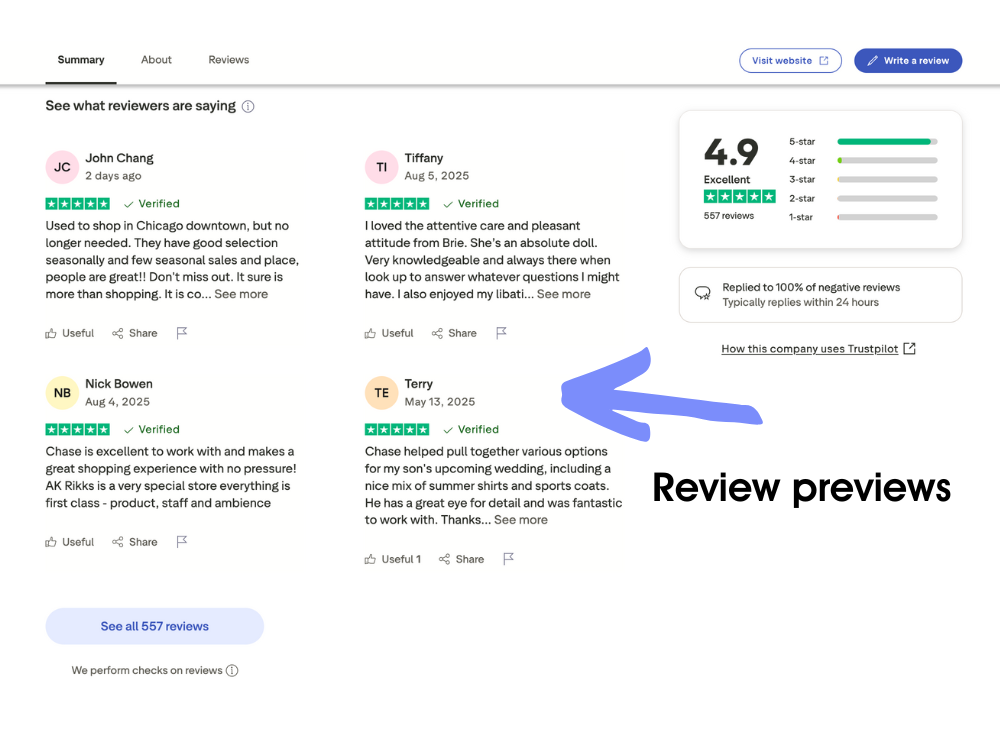
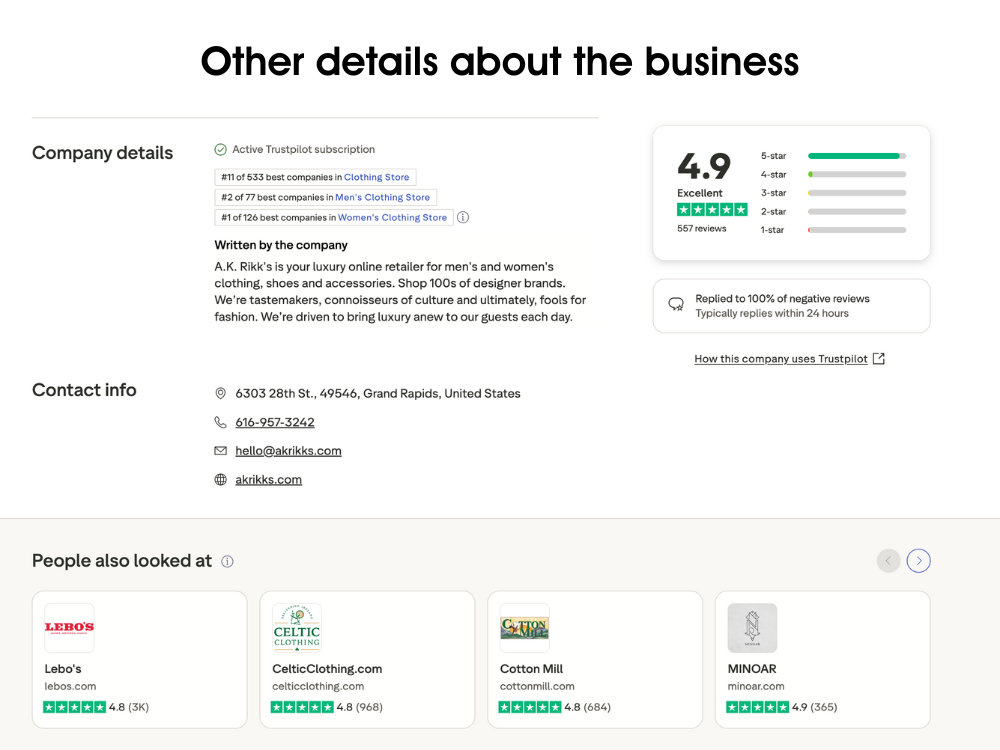
At the bottom, you can find all the reviews, organized by most recent first, and read through them.
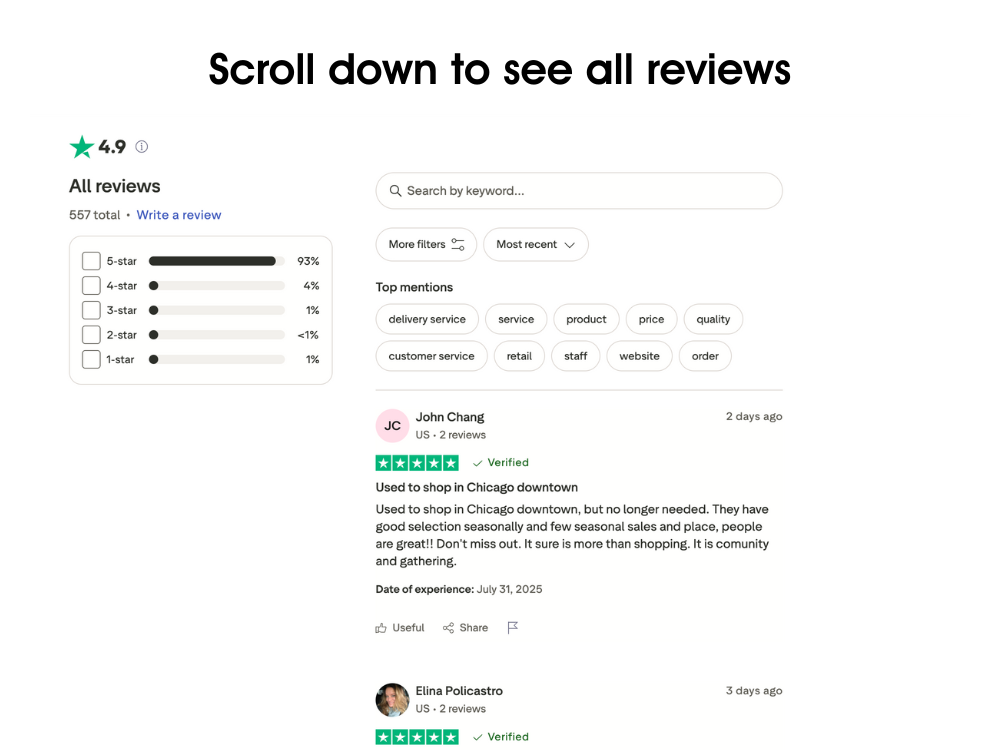
Use the search bar to find relevant reviews around a keyword.
For example, you can filter reviews that include the keyword “price” if you want to learn what consumers think of your competitor’s pricing.
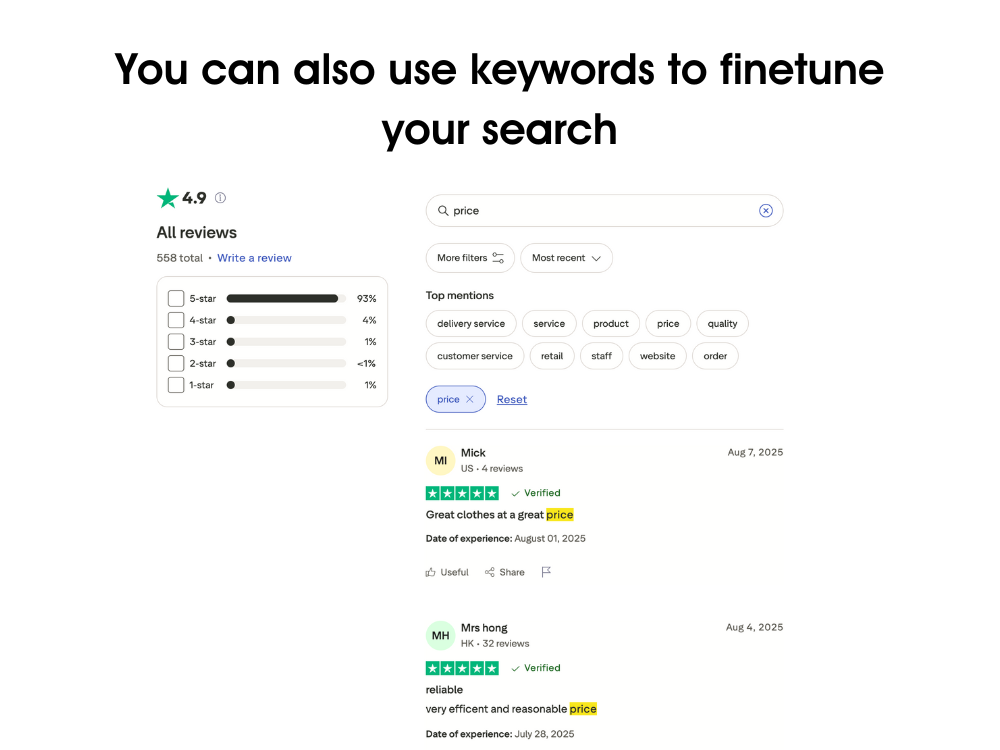
Use the star rating filters to find bad or good reviews about your competitor, depending on your goals.
A business can also reply to a customer’s review on Trustpilot. Observe how they handle complaints and criticisms.
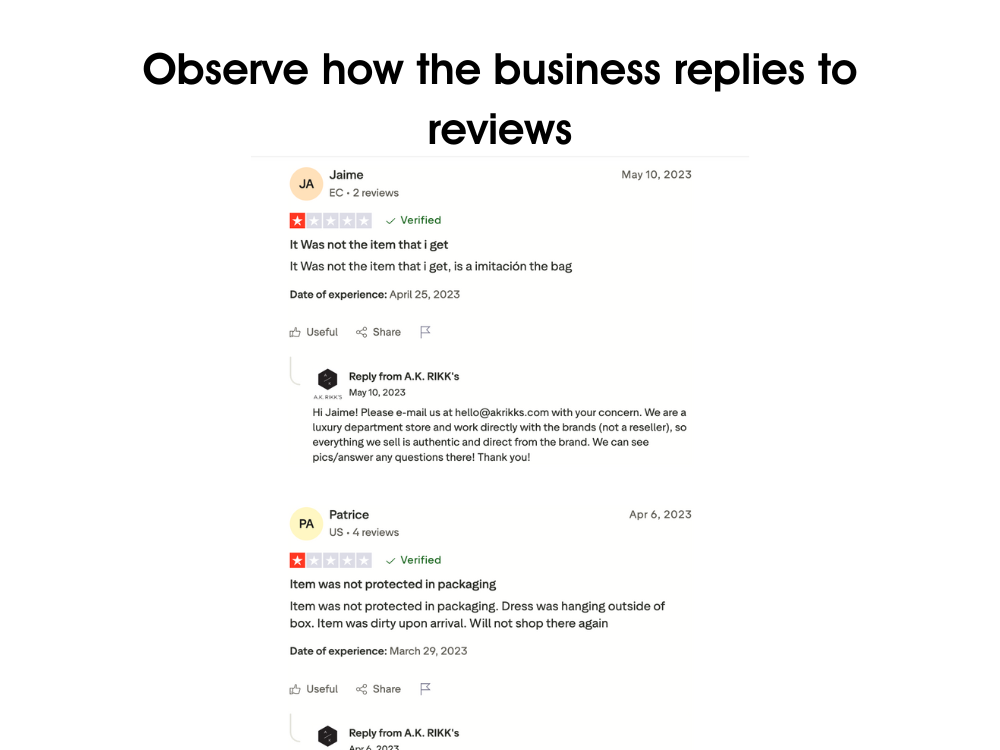
This helps you evaluate their customer engagement strategy.
How to use your customer’s Trustpilot reviews to your advantage
Identify their customer profile
Learn more about your competitors’ target audiences by reading their Trustpilot reviews.
You might even find a unique customer base that you haven’t thought of advertising to when you visit their Trustpilot page.
Refine your unique selling points
Reviews can be used to differentiate your business from the rest. By knowing your competitors’ strengths and weak points, you can position yourself as the superlative choice with a few tweaks.
Identify the gaps you need to fill and spot opportunities you need to grab, and you’ll be on your way to a crystal clear, hugely appealing value proposition.
Adjust your ad and email copy
Customer research is a good foundation for fantastic copywriting. Analyzing reviews are just one of many ways to do customer research, but the good thing about it is that it’s completely free.
Knowing your customers well leads to better copy because you can come up with better hooks and angles that speak to their needs. You can use your knowledge to trigger emotions that amplify your ads’ resonance.
Price your products competitively
Customer reviews also reveal what people really think about the cost of your competitor’s products and whether they think they are getting the most bang for their buck. If customers think the product is overpriced, consider giving lower prices.
You can also match the competition’s price but give more value, whether it’s in freebies, add-ons, or bundles.
Improve your products
Lastly, customer reviews can help you improve your product. Observe which features come up again and again.
For example, customers might say a serum expires quickly. Address this by improving the longevity of your product or marketing your product’s long shelf life.
Target your competitor’s weakness by analyzing reviews.
TrustPilot review competitor analysis: takeaways
Trustpilot is a great addition to your competitor analysis toolkit. It’s an underrated way of market research, allowing you to identify the gaps in your market, what customers want, and what your competitors’ strengths and weaknesses are.
We hope these tips helped you in taking your marketing to the next level.
Ready to start your own competitive analysis? Grab your free competitive analysis template below. If you’d like to learn more about Panoramata, book a demo with us or take it out for a spin by signing up here.
FAQs
What is Trustpilot?
Trustpilot is a popular independent review directory site where customers can leave reviews for brands, and brands can invite customers to leave reviews. It was founded in 2007 and has become a trusted site for authentic and verified customer reviews.
Why is it important to track competitor reviews on Trustpilot?
Tracking competitor reviews on Trustpilot is important because it is a source of unfiltered customer feedback. Businesses can use Trustpilot to identify competitor weaknesses, pinpoint market opportunities, and understand what customers truly want in a product.
How can I use competitor Trustpilot reviews to my advantage?
You can use competitor Trustpilot reviews to identify their customer profile, refine your unique selling points, adjust your marketing copy, price your products competitively, and improve your own products by addressing common customer complaints or desires.



